
[ad_1]
Automation has become an integral part of digital marketing. Studies reveal that 56% of businesses currently use marketing automation, and that number continues to grow.
What are marketing automation tools?
Automation tools automate routine tasks and let you focus on the things that are of utmost importance. There are various kinds of automation tools that offers different types of automation services. E-mail automation is the most common type and is widely used.
Automation helps in boosting the company’s productivity and saves you a lot of time which you can use for other important tasks. For instance, you can utilize marketing automation solutions to gather important information that will help you make more bespoke marketing campaigns and boost conversion rates.
Choosing the Best Marketing Automation Software
1. Determine Your Budget and Business Needs
2. Evaluate the Software’s Ease of Use
Sometimes even the best software is of no use if it is not user-friendly. You should be able to navigate through it easily. Sometimes you have to exercise through the tutorials and manuals to be able to use them properly. Make sure the software you are using provides you with enough stuff to get started. Also, check out how prompt the customer support service is as you may need to approach them quite a few times.
3. Explore Analytics and Reporting Options
Do check out whether the software you are using comes with advanced data analytics option or not. Whichever form of data you are collecting or automating, it becomes very important to analyze the data when you are in the digital marketing field.
Not only analytics, but you also need advanced reporting tools, custom dashboards, and reporting automation to present that data when you are working with clients, partners, or companies in B2B and enterprise environments.
4. Research Integrations
This is a critical point to consider. If your automation tool doesn’t integrate with the other tools and apps you are using then you’ll have to separately analyze the data and functionality of different apps and software and it could be a time-consuming process. Automation in that case will not completely solve your purpose as it can increase your work in such a scenario. SO do make sure the automation software you are choosing integrates well with all other major apps and softwares.
5. Consider Potential Limitations
Some automation software appears to be cheap at first look but when you actually start using them you will realize that they are not as effective as you thought they would be. Sometimes software lacks some or the other feature, at times there are in-app purchases that you are unaware of. Some of them limit the functionality of software to a few times a month and then you have to pay for the additional. So do make sure that the automation software you are choosing provides you with the functionality that you are actually expecting.
6. Request a Demo
Considering all the above points, it is a must to use a demo service before you buy or use any automation software for your business processes.
We’ve compiled a collection of marketing automation tool examples below to make it easier for you to compare your options and decide which one is ideal for you and your team.
Marketing Automation Software Options to Consider
- HubSpot Marketing Automation
- ManyChat
- Moosend
- Omnisend
- EngageBay
- Ontraport
- SendinBlue
- ActiveCampaign
- Salesforce Marketing Cloud Account Engagement
- Keap
- Ortto
- Marketo
- GetResponse
- Drip
- Mautic
1. HubSpot Marketing Automation
One of the most feature-rich solutions on this list is the marketing automation capabilities of HubSpot. According to the G2 Grid for Marketing Automation, it’s also one of the top-rated in terms of client satisfaction.
The combined effect of having all of your data and growth activity in one place can unleash a tonne of creative automation possibilities that would be difficult or impossible if you used separate tools. Of course, HubSpot has a full growth suite that includes sales software, marketing software, and support software, all of which integrate automatically with HubSpot’s CRM.
With HubSpot’s marketing automation feature, you can create straightforward or highly complex conditional workflows using an intuitive visual board.
The technology can be difficult to master (although HubSpot Academy will help you scale up more rapidly), but once you do, the creative possibilities are virtually limitless. You can create straightforward email list autoresponders or a sophisticated network of rules that targets particular users with the ideal email, live chat, website experience, and more.
HubSpot’s automation features essentially go well beyond email, allowing you to scale your growth and spend less time on monotonous activities.
Price: HubSpot’s email and form marketing automation tools are free. Paid versions of Marketing Hub, starting from $45 a month, offer more features and access.
2. ManyChat
Email is just one aspect of marketing automation. Suppose you could automate some of the most routine interactions you have with your clients on other platforms. On Facebook Messenger, Instagram Direct Messages, WhatsApp, and SMS, ManyChat performs the same role as a chatbot.
With ManyChat’s templates and simple UI, a bot can be created in a matter of minutes. Additionally, your CRM and other tools can be synchronised with the data you discover about your users.
Price: A free monthly membership from ManyChat enables communication with up to 1,000 contacts over WhatsApp, Facebook Messenger, and Instagram Direct Messages. The subscription plans for ManyChat start at $15 a month and include additional access and features.
3. Moosend
A platform for email marketing automation called Moosend serves a variety of markets, including e-commerce and SaaS.
The automation tool makes use of sophisticated website tracking and triggers to enable you to deliver the appropriate email campaign to contacts who have expressed interest in a particular good or service. To target potential customers who abandoned their shopping carts without buying anything, for instance, you may create up a cart abandonment series.
Customer data management and collection might be useful for creating product recommendation campaigns based on product views. Using this information, you can also produce thorough reports on the campaign’s development and user behaviour to enhance the potency of your advertising messaging.
Price: A 30-day free trial is available from Moosend so you may try before you buy. Pro plans begin at $9 per month after that.
4. Omnisend
An omnichannel marketing automation software designed for e-commerce is called Omnisend. You can get started quickly with pre-built templates that are designed with online retailers in mind and offer strong automation workflows.
You may incorporate a number of channels into a single automation workflow using Omnisend, including push notifications, Facebook Messenger, email, and SMS. Additionally, Omnisend employs templates and a user-friendly visual builder to make it simple and quick to create workflows, forms, landing pages, pop-ups, and emails.
Price: For small firms just getting started, Omnisend’s free plan with basic email marketing automation is the best option. The paid options offered by Omnisend, which start at $16 per month, will likely be advantageous to medium-sized to large organisations.
5. EngageBay
Another marketing automation tool created exclusively for small- to medium-sized organisations is EngageBay.
This software has a lot of functions, such as website chat, social media management, and email marketing.
Drag-and-drop builders for emails and landing pages, A/B testing, SMS marketing, push notifications, abandoned cart retrieval and reminders, autoresponders, prepared responses, and more are among the other excellent features.
Price: EngageBay offers three advanced paid plans that scale with your business demands and start at $10.39 per user per month. It also offers a free plan for small enterprises.
6. Ontraport
Ontraport is business automation software created especially for entrepreneurs, solopreneurs, and small firms, unlike other marketing automation platforms.
It has a CRM and marketing automation features, but it also offers many other tools for managing and expanding a small business, such as email marketing, landing pages, reporting, and e-commerce.
Ontraport’s emphasis on reporting and insights is one of its most significant features. Ontraport provides you with a clear view of the effectiveness of your campaigns, whilst some tools can be a bit of a mystery.
Price: Ontraport does not have a free plan, however each of its four paid plans comes with a free 14-day trial. Ontraport’s entry-level subscription, which starts at $29 per month and offers drag-and-drop marketing automation and unlimited email sending, is priced competitively.
7. SendinBlue
A popular automation platform for both novice and experienced marketers, SendinBlue is a digital marketing platform.
You can create mobile-friendly email campaigns with SendinBlue either from scratch or using customisable templates. From SendInBlue, you can also execute SMS campaigns. Lead scoring and reporting are advanced features.
Price: SendinBlue has a really good free plan that offers up to 300 emails each day, unlimited contacts, and the fundamental marketing automation features. Paid packages begin at $25 a month.
8. ActiveCampaign
Email marketing, marketing automation, and small business CRM are all combined in ActiveCampaign.
ActiveCampaign’s robust and adaptable marketing automation capabilities is its strongest suit. One of the most complete options available is this one. It also has one of the finest market ratings for delivery.
For people who lack technical proficiency or are newbies, this probably isn’t the best tool. The platform requires a little more time and effort to learn, but once you do, it’s rather strong.
Price: Despite not having a free plan or trial, ActiveCampaign does provide a range of premium plans starting at $29 per month that may be used by B2B, B2C, or e-commerce firms.
9. Salesforce Marketing Cloud Account Engagement
Salesforce Marketing Cloud Account Engagement, formerly known as Pardot, is a cloud automation service that primarily caters to enterprise clients who have the time and technical resources to become familiar with the platform.
It offers a tonne of tools that automate engagement with current contacts, including lead nurturing, CRM connection, email marketing, and ROI reporting functionality to ensure the success of your campaigns.
You may keep track of all online interactions and provide predictive lead score based on the criteria you specify. All of this enhances marketing effectiveness while saving your sales team time and effort.
The software may not be as accessible or inexpensive for smaller organisations or entrepreneurs despite the fact that it is highly strong because there is no free plan or trial available.
Price: For Marketing Cloud Account Engagement plans start at $1,250.
10. Keap
Since its launch in 2001, Keap (formerly Infusionsoft) has aided thousands of marketers in achieving their goals for leads, revenue, and client acquisition.
In my experience, I’ve found that Keap particularly thrives among small business owners and solopreneurs, and I’ve also found that its user base is rather affluent.
Depending on the lead magnet someone signs up for, how many (and which) emails they open and click, or other contact property data, you may put up very complicated decision trees.
Long-time users may prefer Keap’s Max Classic plan as it is the most comparable to the original Infusionsoft platform as its features continue to develop.
Price: Based on customer demands, Keap offers three different subscription plans starting at $129 per month, along with a free 14-day trial.
11. Ortto
One of the most aesthetically pleasing marketing automation tools available is Ortto, formerly known as Autopilot.
The graphic campaign builder in Ortto’s automation software makes it simple to create emails. Audience segmentation, extensive data analytics, and activity tracking are further benefits.
Although this platform is usually used for more complex messaging and targeting, you may still make a straightforward autoresponder based on a timetable.
Price: For individuals who are new to marketing automation, Ortto offers a free package. Additionally, all of its commercial plans—which begin at $29 per month—offer free 14-day trials.
12. Marketo
As a provider of marketing automation software, Marketo was established in 2006. Later, Adobe bought it and included it to their enterprise marketing cloud.
Using Adobe Analytics for data measurement and Adobe Target for experimentation and personalization will provide you a robust enterprise marketing automation and optimization suite thanks to the Adobe connection.
The technology is primarily designed for enterprise customers; most small business owners find it to be a bit out of their price range.
Price: Marketo has no free trial or plan available from Adobe. You must contact the sales department for a quote because Marketo’s plan costs depend on the size of your database.
13. GetResponse
GetResponse is a marketing automation programme with numerous features and layers. A list size of 1,000 contacts, basic autoresponders, and templates are all included in its budget-friendly email marketing plan.
Powerful features like drip marketing, contact scoring, event-based automation, e-commerce tracking, and others are included in GetReponse’s more expensive plans.
This software is generally simple to use. The tool often yields positive results, albeit it performs best when used with basic functions like email newsletters. If you want to use complex conditional logic and marketing automation, using the platform can be more challenging.
Price: GetResponse has a free plan that works well for newsletter distribution. However, GetResponse’s subscription plans, which begin at $13.30 per month, are the only ones that incorporate its marketing automation tools.
14. Drip
One of the few apps on this list that is primarily geared at e-commerce marketing automation is Drip. Offering one of the more “open” platforms, it asserts that it works with “very much any marketing approach you wish to set in motion.”
Email is also one of its advantages. Multi-channel marketing, pre-built workflows, and unlimited email sends are a few features of email marketing and automation.
Additionally, it excels in analytics and customisation. Drip is a strong tool for automating e-commerce marketing overall.
Price: Drip provides a free 14-day trial, despite the fact that it does not have a free plan. Paid plans start at $39 per month and are depending on your email contact count.
15. Mautic
On this list, Mautic is the sole open-source marketing automation platform. As a relatively new player, it was just established in 2014. But Mautic has expanded swiftly and seems to be gaining traction with high-tech businesses.
Currently, Mautic is used by more than 200,000 organisations and is offered in more than 35 languages.
Price: Free.
[ad_2]
FAQs | Gist
1. HubSpot Marketing Automation
2. ManyChat
3. Moosend
4. Omnisend
5. EngageBay
6. Ontraport
7. SendinBlue
8. ActiveCampaign
9. Salesforce Marketing Cloud Account Engagement
10. Keap
11. Ortto
12. Marketo
13. GetResponse
14. Drip
15. Mautic
Marketing Automation is the process of automating routine tasks and processes which let you focus on the things that are of utmost importance. There are various types of automation but e-mail automation is the most common and widely used form of automation.
A Customer Relation Management (CRM) is a sales software used for tracking leads. Along with the basic sales follow up framework, these days, the advanced CRM softwares comes with marketing automation tools that automates leads follow up through lead nurturing, sending invoice and various other processes through e-mail automation, text message automation other kind of automation.

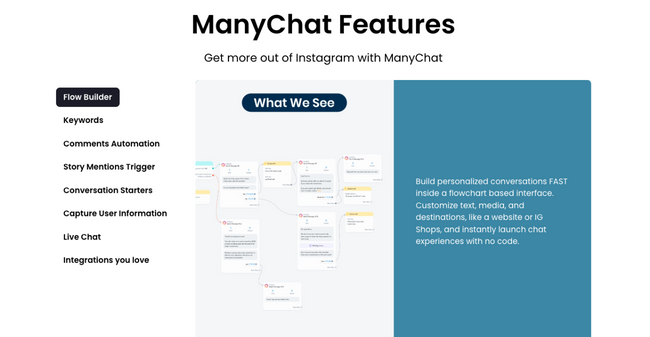

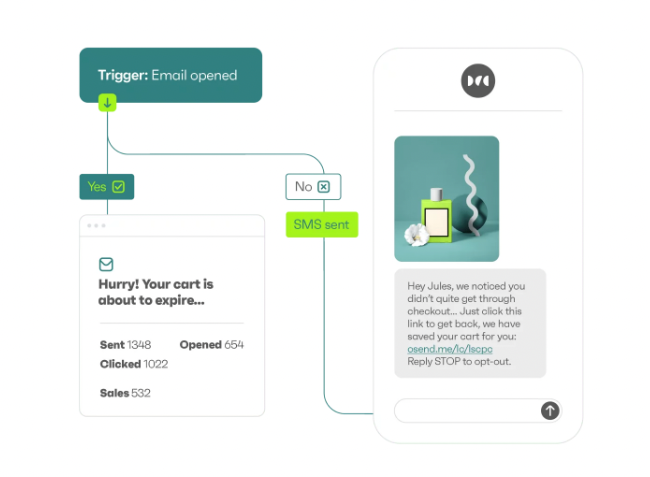
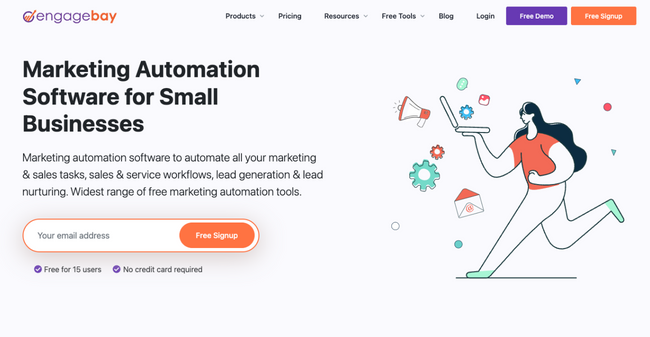
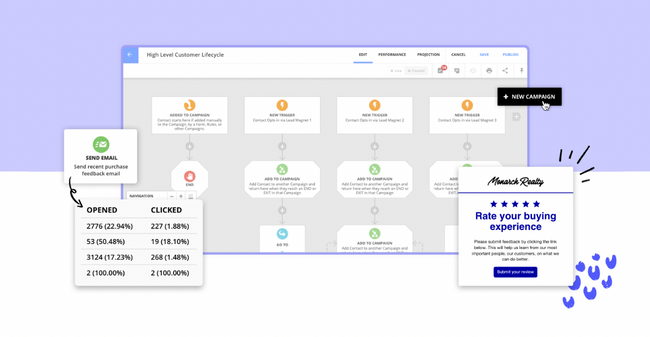
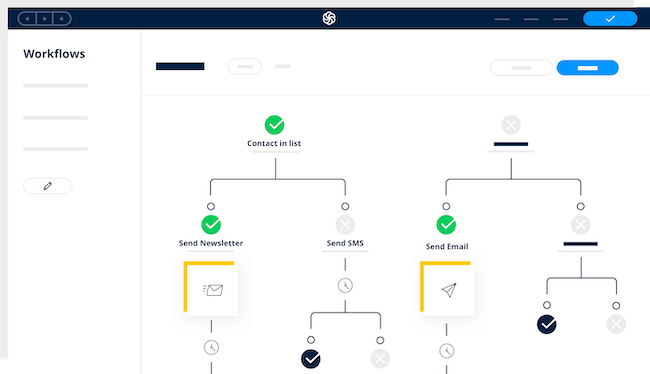
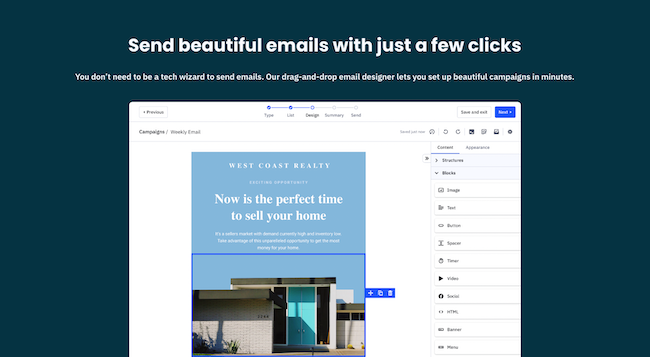
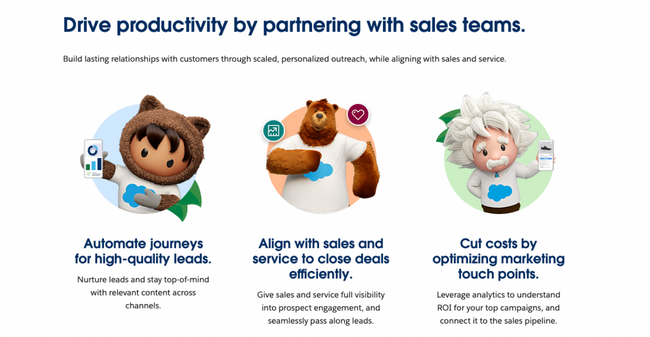

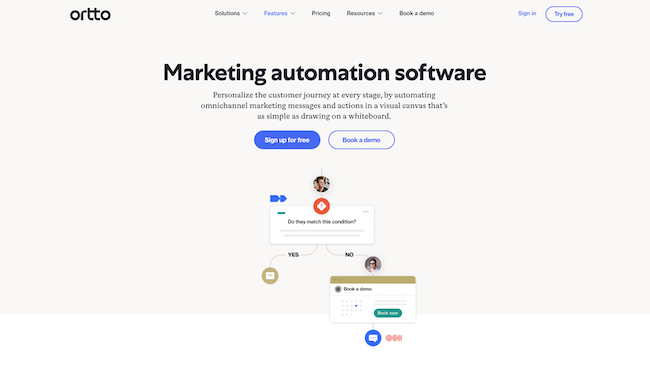
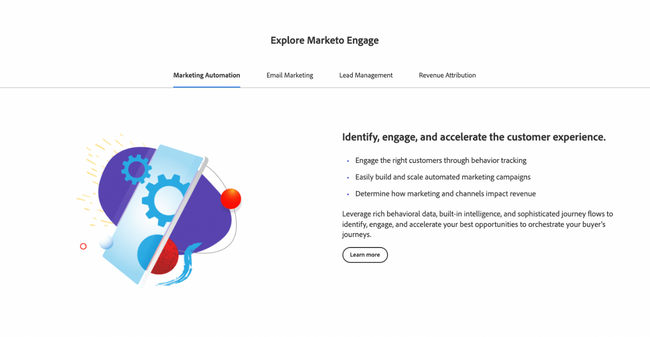
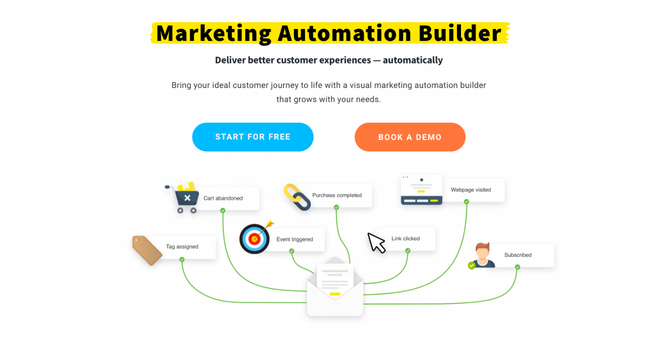

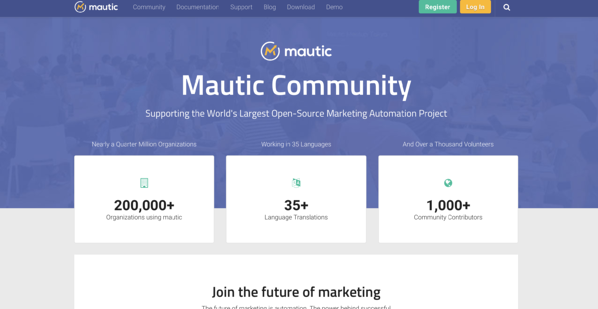

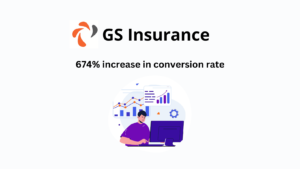

No comment yet, add your voice below!